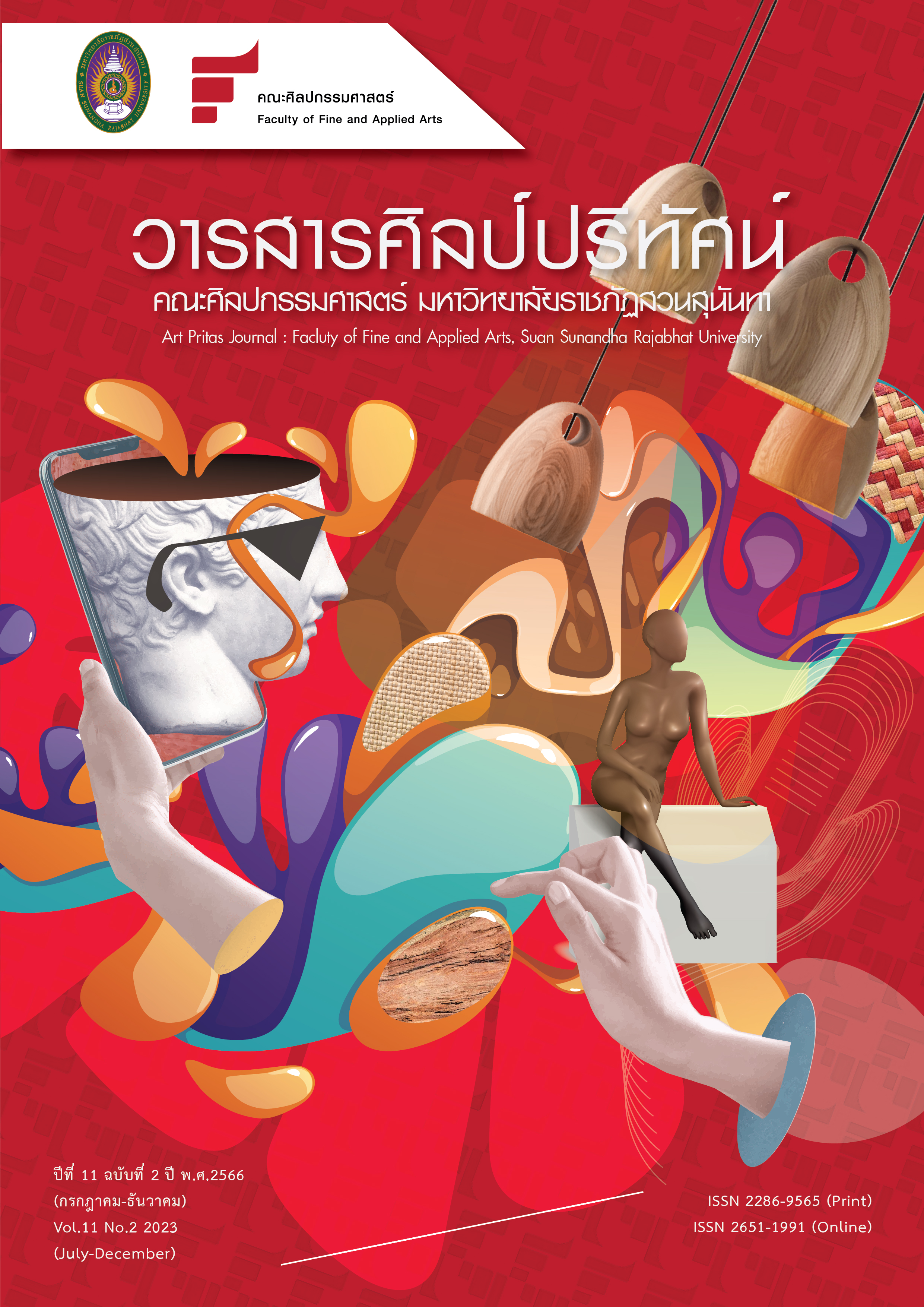ENHANCING ELDERLY LIVING SPACES THROUGH INTERIOR DESIGN: A CASE STUDY IN JIUJIANG CITY, CHINA
Main Article Content
บทคัดย่อ
This study seeks to enhance the living spaces of elderly individuals by examining their specific needs and employing effective interior design strategies in Jiujiang City, China. The research encompasses 300 independently living men and women aged 60 and above, residing in their own homes in Jiujiang City, Jiangxi Province, China. The study also considers the actual specifications and relevant documentation of their current residences. Employing a descriptive analysis approach, targeted audience questionnaires, and qualitative research methods, the collected data is thoroughly analyzed.
The findings indicate that, in interior design interventions, priority should be given to barrier-free accessibility in all indoor spaces, ensuring personal safety. Design solutions should align the functional characteristics of each indoor space with the elderly's needs and preferences to truly address their requirements. Where possible, major changes to the familiar environment of the elderly's permanent residences should be avoided, preserving their existing habits. Instead, the focus should be on adding age-friendly facilities and selectively modifying local structures and spaces that directly impact their lives. This approach can effectively enhance their living spaces, ultimately improving their overall quality of life.
Article Details

อนุญาตภายใต้เงื่อนไข Creative Commons Attribution-NonCommercial-NoDerivatives 4.0 International License.
เนื้อหาและข้อมูลในบทความที่ลงตีพิมพ์ในวารสารศิลป์ปริทัศน์ ถือเป็นข้อคิดเห็นและความรับผิดชอบของผู้เขียนบทความโดยตรง ซึ่งกองบรรณาธิการวารสารไม่จำเป็นต้องเห็นด้วย หรือร่วมรับผิดชอบใดๆ
บทความ ข้อมูล เนื้อหา รูปภาพ ฯลฯ ที่ได้รับการตีพิมพ์ในวารสารศิลป์ปริทัศน์ถือเป็นลิขสิทธิ์ของวารสารศิลป์ปริทัศน์
เอกสารอ้างอิง
Bao, Z. (2008). Renovation of home-based elderly housing for the elderly [J]. Shanghai Real Estate, (5), 28-29.
Burmeister. OK. Websites for Seniors. (2010). Cognitive Accessibility. Australian Journal of Emerging Technologies &
Society, 8(2).
Chang, X., & Hu, H. (2018). Research on the retrofit and application of parts in the interior of old residential
suites—taking an old residential building in a street in Beijing as an example [J], Journal of Architecture, (1). 56-60.
Chen, S., & Li, J. (2016). A Study on the Aging Suitability of the Elderly Public Space in Xiamen "Urban Village" [J].
Huazhong Architecture, 34(06), 119-222.
Du, D. (2018). Transformation of China's urban pension model and supply-side structural reform [D]. Jilin
University.
Faith Verity Finging a way: long-term care homes to support dementia[J]. (2015). In Proceedings of the Lnstitution of
Civil Engineers-Urban Design and Planning, 168(4), 204-217.
Gupta, R. (2016). Overheating in care settings: magnitude, causes, preparedness and remedies[J]. Building
Research & Information, 45(1-2). 1-19.
Jiujiang Municipal Party Committee and Municipal Government Portal. (2019). National Economic and Social
Development Statistics Announcement. Retrieved From https://www.jiujiang.gov.cn/sjkf/tjgb/202004/t20200421_3260394.html
Li, B. (2012). Research on the Demand and Service System of Reconstruction of Old Residential Areas for Aging
Suitability - Taking Xi'an as an Example [D]. Master Thesis of Xi'an University of Architecture and Technology,
Li, Q. (2011). Research on the Reconstruction of Old Residential Suitability for the Aged under the New Home-
based Pension Model [D]. Qingdao: Qingdao University of Technology.
Liu, D., Jia, L., & Wang, S. (2015). Research on the general design of housing for aging under the home-based
care model [J]. Journal of Architecture, (6), 1-8.
Lu, M. (2016). Research on Chinese filial piety education tradition from the perspective of old age care [M].
Beijing: China Social Sciences Press, 04.
National Bureau of Statistics website. (2021). Statistical Bulletin of National Economic and Social Development.
Retrieved From http://www.stats.gov.cn/tjsj/zxfb/202202/t20220227_1827960.html.
Zhong, Z. (2016). Research on barrier-free home design based on the physiological and behavioral
characteristics of the elderly [D]. Nanjing Forestry University.
Zhou, J., Chen, J., Si, H., & Miao, Q. (2016). Current Situation, Demand and Enlightenment of Home-based Elderly
Care in Small and Medium-sized Existing Residential Residential Buildings - Taking Shanghai as an Example [J], Chinese Journal of Architecture, (6), 30-35.
Zhou, Y., & Qin, L. (2016). Age-appropriate transformation of old and new urban housing under the background of aging [J]. Times Architecture, (06), 22-28


